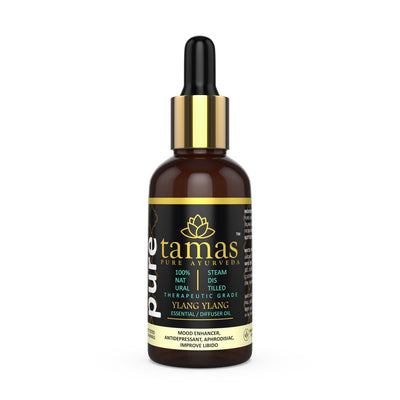
Ayaskrithi
Ayaskrithi is a highly effective medicine that helps treat diabetes
“Is ayurvedic medicine effective for diabetes?”, is a question on a lot of people’s minds. Kerala Ayurveda’s medicine for madhumeha nivaran or treatment of diabetes is Ayaskrithi. Ayaskrithi is a supplementary ayurvedic medicine for diabetes type 1 and also helps in the ayurvedic treatment for diabetes type 2.
Ayurvedic medicine for diabetes like Ayaskrithi can help in reducing blood sugar levels. When a patient undergoes ayurvedic treatment for diabetes in India, he would probably be prescribed Ayaskrithi or products containing similar ingredients.
Ayaskrithi uses traditional ingredients from the Ayurveda texts that make it well-suited for use in the ayurvedic treatment for diabetes. This ayurvedic medicine for sugar is available as a syrup that can be taken 15 to 25 ml by adults and 5 to 15 ml for children, or as prescribed by the doctor. This is one of the best ayurvedic medicine for diabetes and prescribed by leading practitioners.
Ingredient list
Ayaskrithi has many ingredients. The prominent ones are:
Asana
- Asana or Pterocarpus marsupium is the Kino tree.
- It is a preferred medicine for the treatment of diabetes.
- It balances Kapha and pitta doshas.
- It has been proved to be very helpful in treating Type 2 diabetes.
Tinisha
- Tinisha or Ougeinia dalbergioides is a tree that was used to build chariot wheels.
- It reduces Kapha and pitta dosha imbalance.
- It is extremely helpful in the treatment of diabetes.
- It is used to prepare kashayam to treat high blood sugar.
Arjuna
- Arjuna is Terminalia arjuna is a medicine used to treat heart problems.
- It can reduce cholesterol and reduce high blood pressure levels.
- It works on reducing imbalance in all the three doshas.
- It is used to prepare a medication to treat diabetes.
Mesashringi
- Mesashringi is Gymnema Sylvestre, also known as Gudmar.
- It is one of the most important herbs used to treat diabetes.
- It is one of the popular medicines to treat high blood sugar levels.
- It is used to prepare anti-diabetic medicines.
The pancreas controls the blood sugar levels in the body. Sometimes, the functioning of the pancreas can be affected and as a result, the blood sugar level in the body increases. When the body is not able to produce insulin that regulates blood sugar, it is known as Type 1 diabetes. In type 2 diabetes, even though insulin is produced either it is too less or the body resists its effects. Diabetes is today no longer a disease but has become a lifestyle disorder. Poor diet, lack of exercise, a sedentary lifestyle, and other such problems have made diabetes common. Even small children suffer from diabetes. This disease is known as a silent killer and people suffering from it are at risk of getting a stroke or heart attack.
Ayurveda’s view of diabetes
In Ayurveda, diabetes is termed as prameha. According to the classical texts, it occurs because of imbalance in either of the doshas. Based on the same, it is classified into twenty different types. There are ten types of Kapha diabetes, six types of pitta diabetes, and four types of Vata diabetes. Prameha is technically pre-diabetes. If not treated, it can lead to Diabetes mellitus, which is described as Madhumeha.
Imbalance in any of the doshas can cause specific symptoms along with elevated blood sugar levels. Kapha diabetes causes indigestion, loss of appetite, flu-like symptoms, and vomiting. Pitta diabetes affects the bladder and causes urinary infections and diarrhea. It can also cause acidity and sleep apnea. Vatta diabetes causes cough, cold, breathing problems, fatigue, and sleeplessness.
Ayurveda believes that the digestive fire or Agni, when weakened causes diabetes. For madhumeha nivaran, Ayurveda practitioners recommend a holistic treatment that involves a lifestyle change, medication, and a well-balanced diet. The treatment of diabetes in Ayurveda involves:
- Avoiding sweets, high carbohydrates, dairy products, and red meat.
- Eating more fresh vegetables, fruits, and grains.
- Giving up sugar completely and replacing it with honey or jaggery.
- Reducing salt in the diet and increasing fiber.
- Use of spices like turmeric, cumin, coriander, and cinnamon for cooking.
- Avoiding heavy meals and instead eat four to five small meals once every three or four hours. The meals must be balanced with proteins and carbohydrates.
- Giving up stimulants like alcohol and smoking.
- Exercising regularly and practicing yoga can be very helpful in the treatment of madhumeha.
- Medications like neem, basil, gurmar, and bitter melon can be used to treat diabetes.
Causes of diabetes
Diabetes is diagnosed based on the level of blood sugar in the body. A fasting blood sugar value of 100 to 125 mg/dl is considered prediabetes. When fasting blood sugar is 126 mg/dl or more when tested more than two times, the patient is diagnosed as being diabetic.
Type 1 diabetes is a chronic form of diabetes that cannot be treated. It needs insulin injections to regulate blood sugar. It commonly occurs due to genetic factors or due to an autoimmune problem, where the body’s immune system attacks the pancreatic beta cells that produce insulin.
Type 2 diabetes is more of a lifestyle disorder than a disease by itself. It is not permanent and can be treated if treatment is started early when the blood sugar levels are not too high. The body may become resistant to the insulin produced in the pancreas. As a result, the body does not digest blood sugar well leading to high levels in the blood.
Type 2 diabetes patients produce a lesser quantity of insulin than normal people, which again affects blood sugar levels. In a normal person, blood sugar in food is broken down by insulin and moved to the cells. In a diabetic person, this doesn’t happen to result in blood sugar remaining in the body. There are lifestyle-related risks that can cause type 2 diabetes. They include:
- Obesity and being overweight.
- Not exercising and leading a sedentary lifestyle.
- Consuming an unhealthy diet with too much sugar in food, as well as food rich in fat.



















